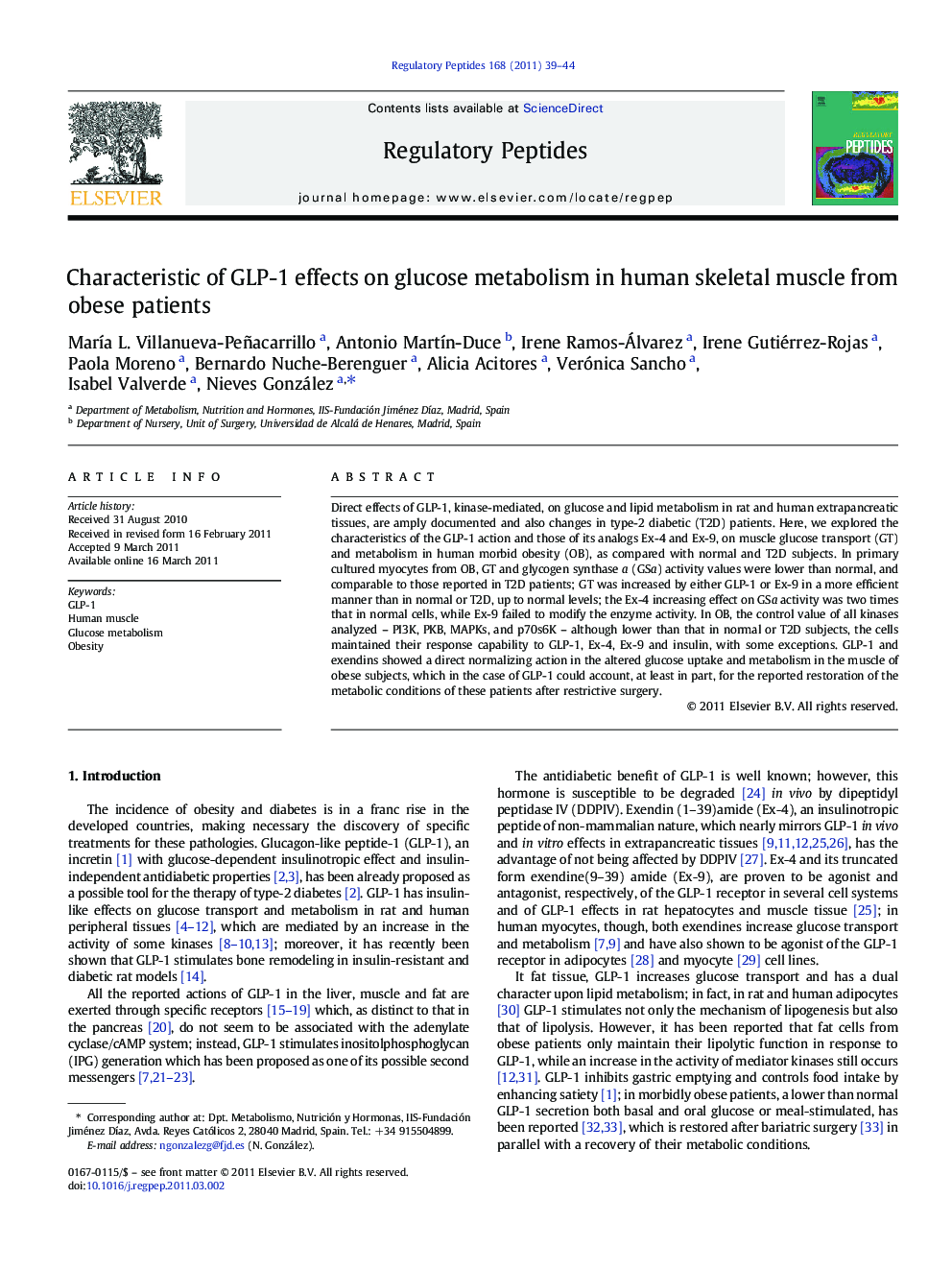| Article ID | Journal | Published Year | Pages | File Type |
|---|---|---|---|---|
| 2022657 | Regulatory Peptides | 2011 | 6 Pages |
Direct effects of GLP-1, kinase-mediated, on glucose and lipid metabolism in rat and human extrapancreatic tissues, are amply documented and also changes in type-2 diabetic (T2D) patients. Here, we explored the characteristics of the GLP-1 action and those of its analogs Ex-4 and Ex-9, on muscle glucose transport (GT) and metabolism in human morbid obesity (OB), as compared with normal and T2D subjects. In primary cultured myocytes from OB, GT and glycogen synthase a (GSa) activity values were lower than normal, and comparable to those reported in T2D patients; GT was increased by either GLP-1 or Ex-9 in a more efficient manner than in normal or T2D, up to normal levels; the Ex-4 increasing effect on GSa activity was two times that in normal cells, while Ex-9 failed to modify the enzyme activity. In OB, the control value of all kinases analyzed – PI3K, PKB, MAPKs, and p70s6K – although lower than that in normal or T2D subjects, the cells maintained their response capability to GLP-1, Ex-4, Ex-9 and insulin, with some exceptions. GLP-1 and exendins showed a direct normalizing action in the altered glucose uptake and metabolism in the muscle of obese subjects, which in the case of GLP-1 could account, at least in part, for the reported restoration of the metabolic conditions of these patients after restrictive surgery.
Research Highlights► In human obese (Ob) myocytes GT and GSa activity were lower than normal. ► In Ob, GLP-1 and Ex-9 increased GT to normal values. ► In Ob, GLP-1 and Ex-4, stimulated GSa; Ex-4’s effect was more potent than that of GLP-1. ► In Ob, all PI3K, PKB, MAPKs and p70s6K activities were lower than normal. ► In Ob, GLP-1, Ex-4 and Ex-9 had a normalizing effect on PI3K, PKB and MAPKs.
